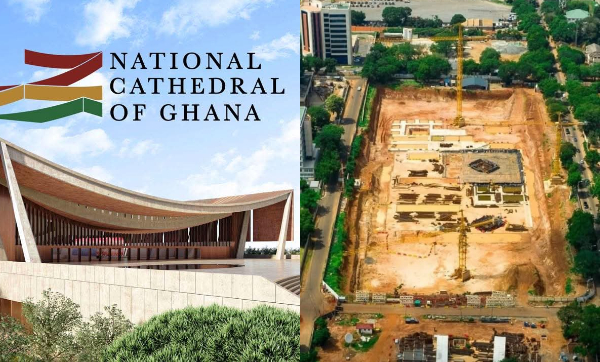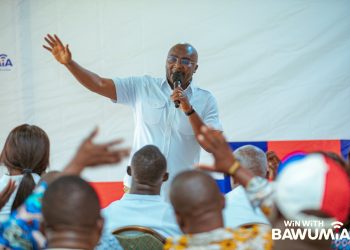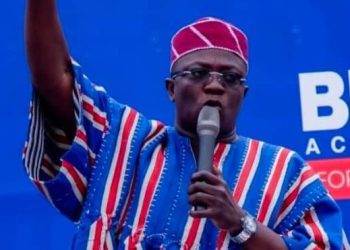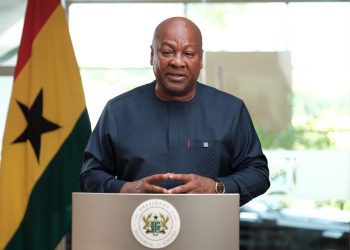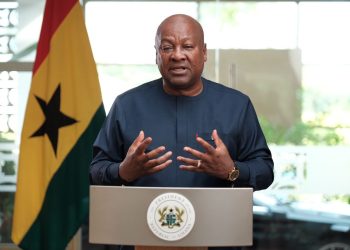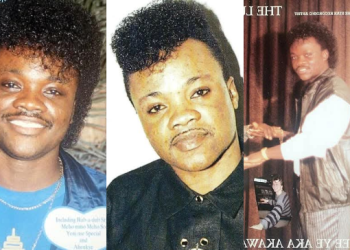Government of Ghana led by President John Mahama has announced a major policy shift to repurpose the unfinished National Cathedral project into a National Cultural Convention Centre (NCCC)—a landmark facility that will anchor Ghana’s growing creative economy and serve as a continental hub for cultural diplomacy.
The transformation, revealed in a policy document tied to the government’s 24-hour economy agenda for culture, creative arts and tourism dubbed “SHOW24”, will see the controversial cathedral site reimagined as Africa’s premier venue for film festivals, trade shows, international exhibitions and creative summits.
At the national level, a bold flagship intervention is proposed: converting the National Cathedral site into the National Cultural Convention Centre (NCCC), in partnership with the AfCFTA Secretariat.
This venue will serve as Africa’s premier cultural diplomacy and creative economy forum, hosting international exhibitions, film festivals, trade shows, and summits-filling a critical infrastructure gap without conflicting with national values or faith institutions.
The Ministry of Tourism, Arts and Culture, in collaboration with the Secretariat of the African Continental Free Trade Area (AfCFTA), is to spearhead the initiative.
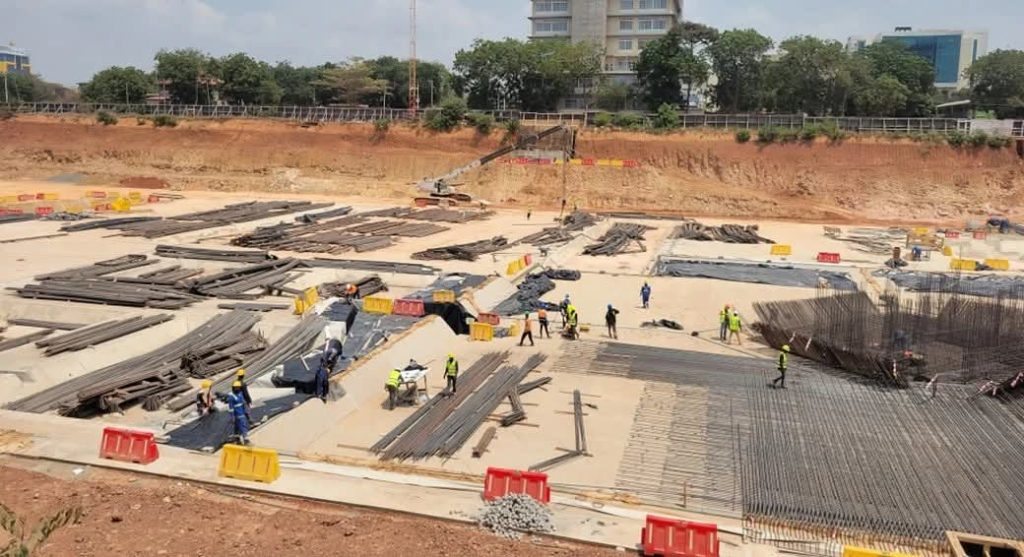
Officials say it fills a critical infrastructure gap in Ghana’s creative and cultural space while averting religious or political conflicts that have long plagued the cathedral concept.By all accounts, the National Cathedral of Ghana was never just a building.
It was imagined as a monumental space—physically impressive, spiritually resonant, and symbolically central to the national identity of a country that proudly counts itself among the most religious in the world.
Unveiled in 2018 by President Nana Addo Dankwa Akufo-Addo, the cathedral was to be a 5,000-seat non-denominational Christian worship centre, located in the heart of Accra.
Designed by internationally acclaimed British-Ghanaian architect Sir David Adjaye, the structure promised a blend of contemporary African design and Christian symbolism.
But what truly made the cathedral unique was the ambitious range of components it was to house—making it not only a sanctuary for faith but also a repository of Ghana’s Christian heritage and a gathering place for public life.
A sacred centre of worship
At the core of the project was the main sanctuary—a vast, column-free hall that would seat 5,000 people.
This was the spiritual heart of the cathedral, meant to host national Christian events, state funerals, ecumenical services, and international religious summits.
The space would include an ornate altar, a grand pulpit, a choir area, and a ceremonial seat for the President of Ghana.
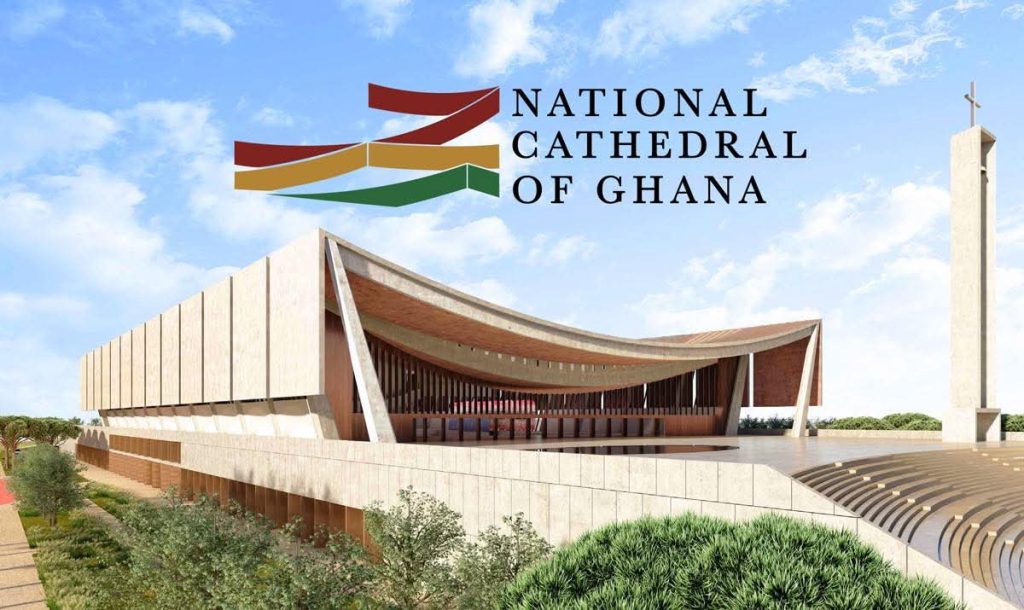
High stained-glass windows and a dramatic wooden ceiling, drawing inspiration from Akan and Ewe architecture, were to give the interior both solemnity and grandeur.
A museum for Ghana’s Christian journey
Branching out from the sanctuary was to be the National Christian Museum, a first-of-its-kind institution dedicated to chronicling the spread of Christianity in Ghana and West Africa. The museum would tell the story of missionaries, early Ghanaian converts, denominational development, and the role of the church in Ghana’s independence struggle.
Visitors would explore galleries filled with historical documents, digital exhibits, and oral histories.
The museum aimed to serve scholars, pilgrims, and tourists alike—placing Ghana at the centre of African Christian memory.
The Bible Museum of Africa
Another planned highlight was the Bible Museum of Africa—a facility envisioned to showcase rare biblical manuscripts, replicas of ancient scrolls, and exhibits linking the Bible to African history and spirituality.
It was also intended as an educational resource, with rooms for seminars and workshops.
A garden of scripture
Adjacent to the cathedral was to be a Biblical Garden, a landscaped oasis filled with plants and trees mentioned in the Bible—such as olive, fig, myrrh, and frankincense.
Designed as a space for prayer, meditation, and learning, the garden would blend aesthetics with spiritual education, complete with sculptures and scripture inscriptions.
Chapels, prayer rooms, and a civic hall
The cathedral complex was also to include smaller chapels and prayer rooms for personal devotion, weddings, baptisms, and interdenominational meetings.
These intimate spaces were to accommodate groups from Ghana’s many Christian traditions, from Charismatics to Methodists.
Multi-purpose hall to host conferences
There was also a multi-purpose hall, envisioned to host conferences, public lectures, state memorials, and ecumenical dialogues—further underlining the project’s civic relevance.
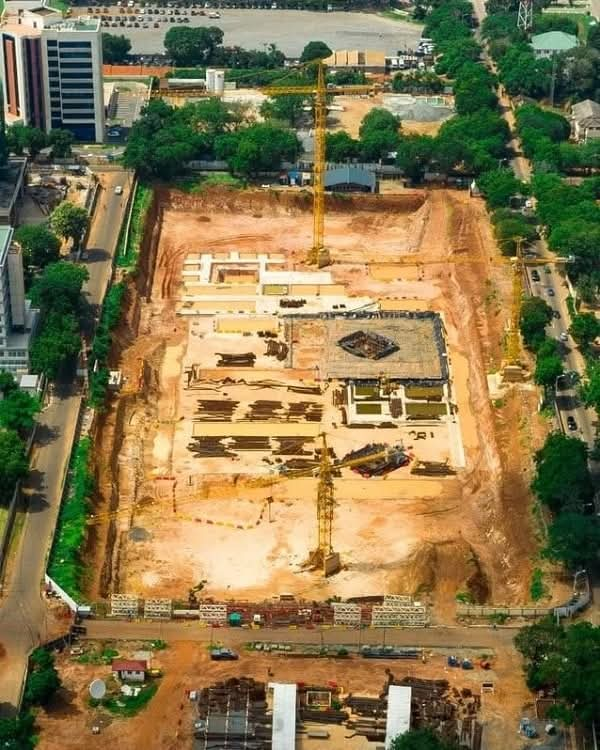
Heroes’ Corner and national reflection
In a solemn gesture to Ghanaian Christianity’s enduring legacy, the site was to house a memorial space known as Heroes’ Corner. Here, plaques, sculptures, and multimedia installations would honour clergy, martyrs, and prominent Ghanaian Christians who shaped the nation’s spiritual and moral foundations.
A beacon of modernity
Topping it all off was the proposed Grand Bell Tower, a soaring structure designed to chime across Accra during national events or religious holidays.
With echoes of European cathedrals and African steeples, it was intended to become one of the most iconic silhouettes on the city’s skyline.
The cathedral complex was to feature underground parking, administrative offices, a religious bookstore, a souvenir shop, and even a café to make it welcoming to visitors of all backgrounds.
It would sit on a sprawling 14-acre landscaped park, complete with a civic plaza for national ceremonies.
However, the site became a national flashpoint, with opposition National Democratic Congress (NDC) Party questioning its relevance, its cost, and its legality in a secular republic already grappling with economic hardship and debt restructuring.
Scope of Work Done So Far
According to official updates from the National Cathedral Secretariat and parliamentary oversight committees, here is what has been completed on the site:
Site clearing and excavation
The original government residential buildings on the Ridge site were demolished.
Land was cleared, leveled, and excavated for foundational works.
Blasting and rock removal were completed to prepare for deep foundations.
Foundation and substructure work
Portions of the foundation have been laid.
Reinforced concrete columns and part of the superstructure have been erected.
Retaining walls and underground works for drainage and utilities were partially installed.
Perimeter fencing and security
The site has been securely fenced to prevent unauthorized access.
Security personnel are posted regularly to guard against vandalism or encroachment.
Administrative infrastructure
A temporary office structure for the Cathedral Secretariat was set up.
Project management and oversight teams have operated from this location.
Initial landscaping and utility preparation
Limited groundwork for landscaping and civil infrastructure has commenced.
Connections for water, electricity, and sewerage were planned but remain incomplete.
25% of the physical construction completed
By all estimates, only about 25% of the physical construction has been completed, mainly in the form of foundational work. The iconic architectural elements, sanctuary, museum spaces, and other key features have not yet been built.
GH¢339m in public funds spent
By official estimates, more than GH¢339 million in public funds had been committed to the project by early 2024.
That figure includes approximately GH¢113 million spent directly on construction-related works, mainly excavation, foundation laying, and partial substructures.
The remainder—some GH¢225 million—went to a wide range of expenses, including consultancy fees, architectural designs, administrative salaries, legal services, public relations campaigns, and payments to the project’s Board of Trustees.
These expenditures came despite repeated government assurances that the cathedral would be largely funded through private donations.
In reality, private contributions fell far short of expectations, and the state quietly stepped in to fill the gap.
Mahama and the NDC’s relentless critique
Current President John Dramani Mahama then in opposition led his NDC party to oppose the project.
In multiple addresses, Mahama described the National Cathedral as “a misplaced priority,” arguing that the use of public funds on a religious structure while schools lacked desks and hospitals lacked beds was unconscionable.
During a speech at a Christian Ecumenical Council meeting in 2023, Mahama warned clergy against being used for political gain and suggested the cathedral had become a “monument to failed leadership and broken promises.”
The NDC in Parliament repeatedly demanded accountability from Finance Minister Ken Ofori-Atta, who was accused of allocating funds for the project through opaque budget lines.
In 2023, NDC MPs boycotted a budget session in protest of further allocations to the cathedral, branding it a “wasteful white elephant.”

